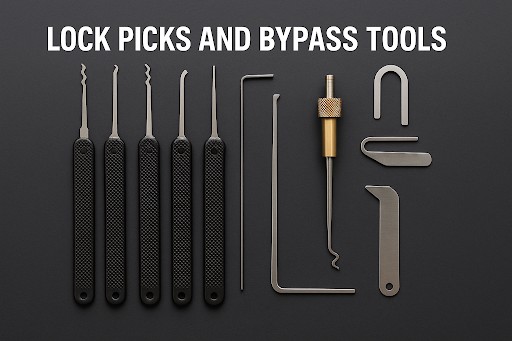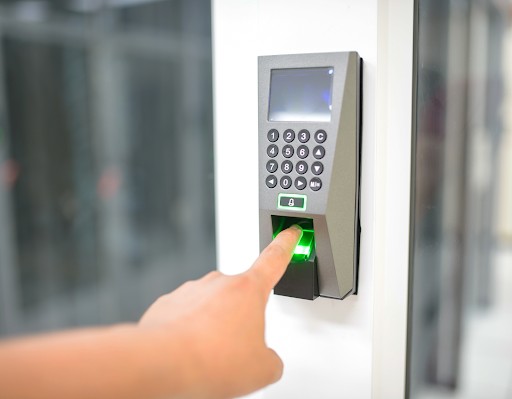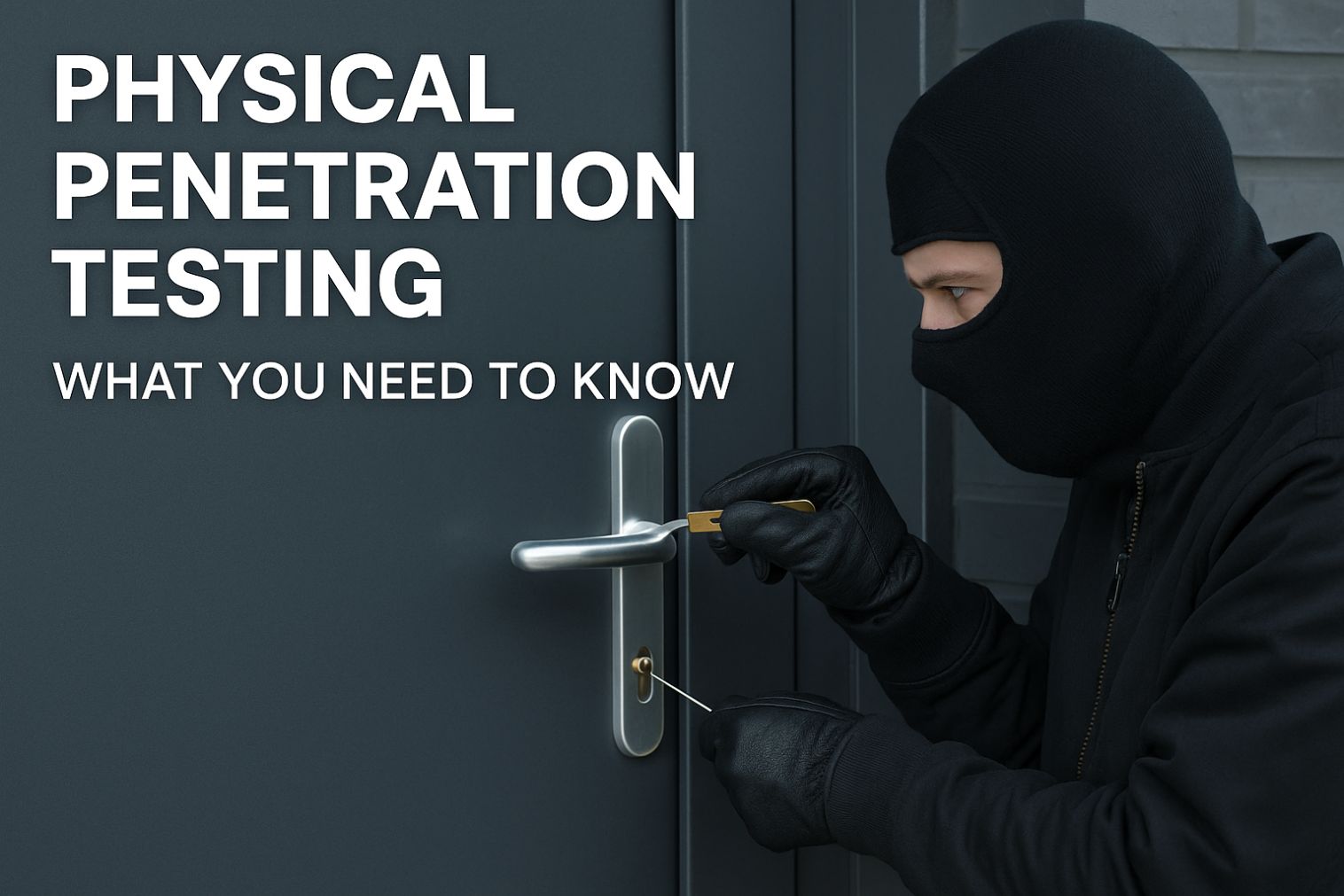When most people think of cybersecurity, they imagine firewalls, antivirus software, and encryption. However, here’s the thing: A significant part of your security relies on something more tangible—your building’s physical defenses. This is where physical penetration testing comes in.
In this blog, I’ll walk you through what physical penetration testing is, how it works, why it’s crucial for your business, and everything else you need to know to get started.
How to Become a Physical Penetration Tester

Becoming a physical penetration tester isn’t just about knowing how to hack locks or sneak past security guards—it’s about understanding systems, human behavior, and vulnerabilities that go beyond software.
Here’s how you can start:
- Get the Right Education: A strong foundation in cybersecurity is crucial. While some physical penetration testers come from backgrounds in law enforcement or engineering, many have degrees in computer science or cybersecurity.
- Certifications and Training: If you’re serious about penetration testing, consider certifications like Certified Ethical Hacker (CEH), OSCP (Offensive Security Certified Professional), and specialized physical security certifications.
- Hands-on Practice: Nothing beats real-world experience. Practice your skills in a controlled environment. Many professionals start by testing the security of their own offices or volunteer with security firms.
- Stay Updated: The tools and methods used in physical penetration testing evolve, so it’s essential to stay current with the latest trends, tools, and techniques in physical security.
Becoming a physical penetration tester is as much about experience as it is about education and training. With the right mindset and skill set, you can dive into this exciting and challenging career.
What Are Some Physical Tools Used in Penetration Testing?

One of the most exciting aspects of physical penetration testing is the wide range of tools you can use. These tools help testers identify vulnerabilities in physical security measures, such as locks, surveillance systems, and access control devices.
Here are some of the most commonly used tools:
- Lock Picks and Bypass Tools: These are essential for gaining access to secure areas through mechanical locks.
- RFID Cloners and Key Fob Copying Devices: Many companies rely on RFID badges or key fobs for access control. Physical penetration testers use RFID cloners to copy credentials and gain access to restricted areas.
- Pin Punches and Shim Kits: Used for bypassing traditional locks, pin punches and shim kits allow testers to gain access without leaving traces.
- Tactical Flashlights and Hidden Cameras: These tools help testers identify blind spots in security systems and create a covert surveillance setup.
- Drills and Other Entry Tools: In some situations, testers may need to use drills or other tools to gain entry to secured rooms when other methods fail.
These tools are just a small sample of what’s available to penetration testers. The goal is to expose vulnerabilities before malicious actors can exploit them, and the right tools can make a significant difference.
The Benefits of Physical Penetration Testing

Physical penetration testing is often an overlooked part of cybersecurity, but it’s one of the most effective ways to identify and mitigate risks. Here are a few benefits of implementing physical penetration tests:
- Identify Weaknesses in Physical Security: Whether it’s unlocked doors, easily bypassed entry points, or outdated security systems, physical penetration testing exposes vulnerabilities that can be overlooked in traditional IT security audits.
- Protect Sensitive Data: A physical breach can often lead to stolen equipment or access to confidential documents. Physical penetration testing helps you secure hardware and physical assets.
- Test Employee Response: By simulating unauthorized access attempts, you can assess how your employees respond to such attempts. Are they following security protocols? Are they aware of common social engineering tactics?
- Comprehensive Security View: Physical penetration testing is the only way to assess your security from all angles fully. Combining it with digital penetration tests ensures your entire infrastructure, both virtual and physical, is secure.
- Improve Risk Management: By identifying physical security flaws, you can prioritize investments and improvements to mitigate risk. This proactive approach reduces the likelihood of real-world breaches.
Methods Used in Physical Penetration Testing

Physical penetration testers employ several methods to simulate attacks and assess physical security. These methods vary based on the target environment and the specific vulnerabilities being tested. Here are the primary methods:
Social Engineering
Testers may use social engineering tactics, such as impersonating employees or contractors, to bypass physical security measures. This could include tactics like tailgating (following someone through a secured door) or phishing (using fake credentials to gain access).
Lock Bypassing
Using specialized tools, physical penetration testers may attempt to bypass traditional locks and security systems. This could involve lock picking or using bypass methods such as shim kits or code manipulation.
Surveillance and Reconnaissance
Before attempting any physical breach, testers gather information about the premises. This might involve surveillance (e.g., watching security guard routines, identifying weak spots in surveillance camera coverage) or gathering publicly available data.
Access Control Testing
Testing access control systems is critical. Testers may attempt to clone RFID cards, hack biometric systems, or exploit weaknesses in physical entry mechanisms like keypads or card readers.
Forensic Analysis

After performing a penetration test, forensic analysis helps identify how vulnerabilities were exploited and what could have been done to prevent the breach. This analysis is crucial for ensuring that security improvements are implemented.
Cost of a Physical Penetration Test
The cost of a physical penetration test can vary significantly depending on several factors:
- Scope of the Test: More extensive tests, such as those that cover multiple locations or require complex techniques, will naturally incur higher costs.
- Tools and Equipment: Some penetration tests require high-end tools or specialized equipment, which can add to the cost.
- Consultant Expertise: Experienced testers with specialized skills or certifications typically command higher fees.
- Duration of the Test: Longer tests, especially those that require covert operations or in-depth analysis, may result in a higher price.
On average, a physical penetration test can cost anywhere from $5,000 to $20,000, depending on the project’s complexity and size. However, investing in a penetration test can save businesses much more by preventing breaches and protecting sensitive information.
Conclusion
In today’s increasingly digital world, protecting your physical security is just as important as securing your network. Physical penetration testing provides an essential layer of defense by identifying weaknesses in your building’s security systems before attackers can exploit them.
By becoming a physical penetration tester, using the right tools, understanding the benefits, and applying the correct methods, you can ensure that your business is safe from physical breaches. While the cost may vary, the value it provides in risk reduction and peace of mind is immeasurable.
Take action today—whether you’re a business owner looking to secure your company or an aspiring tester looking to make an impact, physical penetration testing is a crucial part of the security landscape.









